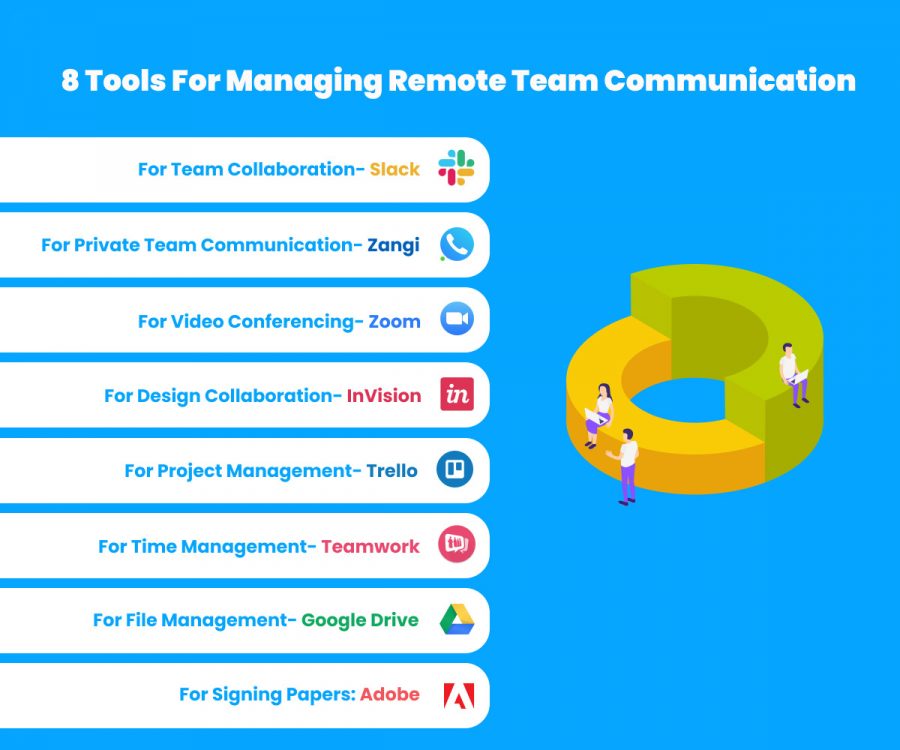
7 Ways to Successfully Manage International Teams
In the modern world business is a global enterprise and you now have to think about how to integrate team members from all over and how to manage international teams.
With how small the internet and other technologies have made the world you can recruit talent from just about anywhere and still be successful. Depending on your industry and business, you could easily have team members from different corners of the planet working together; which provides its own unique set of challenges. How do you bring people together from different countries, cultures, and religions to work on a common project or goal?
Businesses have been putting together and trying to manage international teams for many decades with varying degrees of success, but it is becoming far more common in the internet age.
You will need to plan and research appropriately to make an international team work well together, but once they start to gel you will see the benefit of all your hard work. Over the years there have been some proven methods to bring international coworkers together and it is essential that you learn from it.
1. Establish Roles and Duties Right Away
Your international team of workers is going to need to know what their roles and responsibilities are as soon as you get off the ground. Communicating these roles in an official capacity will help ensure that there is no confusion amongst team members.
Regardless of where in the world members of the team are working from the should still feel like they are part of a structured environment with the same responsibilities as if they were at the office.
If you do what you can to make your team members feel like they are still accountable for their work it will go a long way. When people get a taste of freedom it will sometimes make them forget what is important, so it is up to you to keep everyone aware of their duties and place.
2. Choose Your Tool(s) to Manage International Teams

1. For Team Collaboration– Slack
- Share files
- Speak as a group or through direct messaging
- Enjoy almost 100 integrations, or use the open API to build your own
- Access securely encrypted transfer data
- Use desktop and mobile messaging
- Use two-way video and audio
- Enjoy a comprehensive search functionality
- Personalize user profiles
[Related: Cheaper Slack Alternatives: Best Budget Team Communication Apps]
2. For Private Remote Team Communication– Zangi
- Send end to end encrypted messages one-on-one or in groups
- Web Dashboard to manage international teams and your business
- Add, remove users to your Network
- Send notifications, view statistics, activity & more.
- Integrate your existing CRM to Zangi via API codes
- Integrate your existing office phone system for secure roaming-free calls
- Use desktop and mobile messaging
- Add special security algorithms and keys into the source code
- Add your logo, branding, features to your app
- Apps can be incognito or we published on Google Play or the App Store.
3. For Video Conferencing– Zoom
- Cloud Video Conferencing
- HD Voice with dynamic voice detection
- Group Collaboration and Messaging
- Screen sharing documents, photos, and video clips
- Whiteboarding and Mobile Whiteboarding
- Secure Socket Layer (SSL) encryption
- Unlimited VOIP and Call me/Call Out
- Content Sharing and scheduling & starting meetings
4. For Design Collaboration– InVision
- Design Prototyping
- Sharing and Presentation
- Feedback and Commenting
- Real-Time Design Meetings and Whiteboarding
- Design Organization and Collaboration
- Project Management for Designers
- User Testing and Research
5. For Project Management– Trello
- Quick overview on front and back of cards
- An easy organization with tags, labels, and categories
- Checklists, with a progress meter
- Easy uploading of files and attachments
- Data filtering
- Archiving of card records
- Deadline reminders
- Email notifications
- Activity log and assign tasks
- SSL encryption of data
- Search function
- Manage International Teams Remotely
6. For Time Management– Teamwork
- Organize and categorize their active projects
- Get a snapshot of what the team is working on
- Create project roles, invite followers, assign project owners, add status updates.
- Attach documents to tasks, set their priority, add estimates, progress, reminders, tags, comments.
- Assign milestone features such as description, reminder, calendar, tags.
- Calendar tool for tasks, milestones, and events.
- Enables users to write messages within projects.
- Log time spent on tasks and projects, and even set start and end times.
[Related: 5 Professional Business Communication Tools for Collaboration]
3. Start With An Open Discussion
When you are bringing people together from vastly different areas there are going to be some cultural differences to be aware of. The best way to get everyone on the same page is to have an open discussion about any issues that may arise.
No one can be expected to know the different intricacies of every culture around the world, so get people talking so they can let people know the different things that will work for them and make them comfortable. It may be difficult for some members to speak up about these things, which is perfectly understandable. Do not try to force anyone to talk, but always leave an option for them to speak privately or write an email about any personal preferences.
You want everyone to feel comfortable and welcome in the virtual office environment. The more your employees understand each other the better they will get along and work together. It is your responsibility to get the conversation started and motivate your team to communicate with each other. We’ve previously covered a list of mistakes businesses should avoid during virtual communication.
4. Keep A Tight Schedule
Now you may consider this a responsibility regardless of what you are doing in business, but it is doubly important to manage international teams. You will need to create a schedule over a 24-hour period to deal with time zone changes and people working at different times. It is up to you to keep your employees on schedule and getting all of their work completed in a timely manner.
This certainly doesn’t mean you have to be awake all day every day, but it does mean you have to hone your scheduling and organizational skills. What this all comes down to is preparation and communication with every member of your team.
Even if there are language barriers, everyone should know exactly what they are supposed to be doing every day. It is a general rule of thumb to check in with the entire group at a determined time daily to get feedback and questions. An international team is going to put your managerial skills to the test, but it can pay off big if you do well.
5. Look For Ways To Bring People Together
One of the most difficult parts to manage international teams scattered throughout the world is having them actually feel like they are part of a team. People working from home or abroad can start to feel isolated, alone, and depressed if things are not kept in check. It is your duty to keep your team members involved socially so they have positive mental health.
Feeling a part of a team is going to give members motivation to work harder and will boost their confidence in each other. There are a variety of ways you can bring a group of strangers together and get them communicating and socializing. While the main focus here is always going to be work, it is important to keep your team happy and motivated. More work will get done when employees feel good about themselves and their careers.
We asked Wanda Kamau, an HR specialist at Pick Writers about various ways you can bring a group of remote coworkers together. Here’s what she recommended: “You can start by assigning group tasks to certain team members that will force them to work together. It doesn’t have to be anything over-complicated, any work task that is going to make them speak to each other is a starting point.”
Not everyone is always going to get along, and that is a given in every single work environment, so you must do your best to positively reinforce communication between members. However, don’t forget that you should also consider employees need to be able to have private conversations, in a secure environment, where they’re in control.
6. Issue Challenges With Rewards
Sometimes there is nothing better than a little competition to get people fired up and talking. Start giving incentives to your team members to keep them motivated and working hard at their jobs. Gauge the personalities you have and try to tailor the competitions to suit the individuals in your group.
It is especially important to put in extra work to keep remote employees at their best. Working away from the office presents a whole different set of challenges as a worker, and you need to take all of this into account when planning for your team.
7. Take Extra Training On Team Building
Just about anywhere in the country, you can find companies offering managerial training to manage international teams building.
As a way to bolster your confidence and abilities as a leader, you should look into some team-building courses near you. You can take the skills you have learned and immediately start implementing them in your new workgroup. It is going to take a lot of extra effort to make it mesh, so don’t be afraid of a little extra work.
Planning Is Key
As a manager, you are already well aware of how important planning and scheduling are to a business running successfully. To manage international teams requires you to be diligent in every aspect of planning and also get creative in how you get your employees to communicate.
When you can get a team of workers to come together from different parts of the world it can be a thing of beauty. Regardless of where people come from they are working towards a common goal and you are the one that needs to orchestrate it all. Take your time and plan every detail that you can and trust in your new team to come together in time.
Get in Touch
Send us a note using the form below and we will get in touch with you shortly.
 Bio: Kristin Savage nourishes, sparks and empowers using the magic of a word. Along with pursuing her degree in Creative Writing, Kristin was gaining experience in the publishing industry, with expertise in marketing strategy for publishers and authors. Now she had found herself as a freelance writer. Kristin runs her own FlyWriting blog. You can find her on Facebook.
Bio: Kristin Savage nourishes, sparks and empowers using the magic of a word. Along with pursuing her degree in Creative Writing, Kristin was gaining experience in the publishing industry, with expertise in marketing strategy for publishers and authors. Now she had found herself as a freelance writer. Kristin runs her own FlyWriting blog. You can find her on Facebook.

Leave a Reply